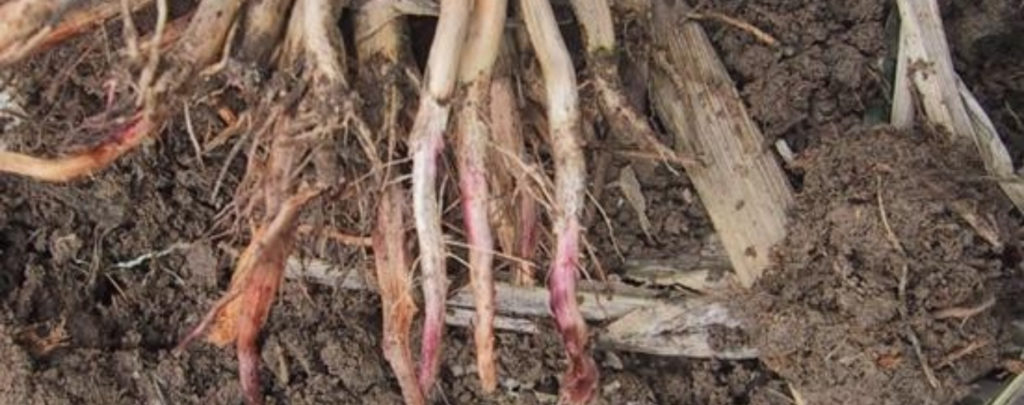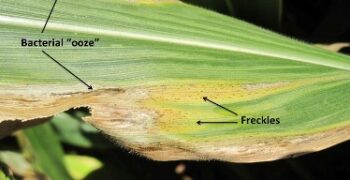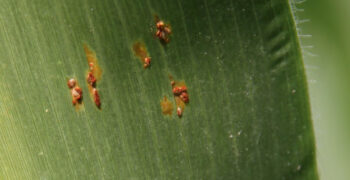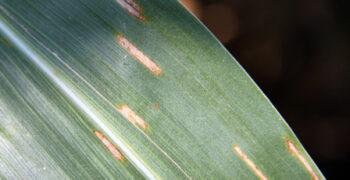Background and Symptoms:
Red Root Rot is a late season disease in corn that is caused by a complex of soil fungi that attack the plant roots. The optimal temperature range for infection is 75 to 80˚F. Infection may occur as early as mid-silking. Common symptoms of Red Root Rot are dark-red to pink roots and basal stalk discoloration. As the disease progresses, the red discoloration turns to a deep purplish red and root tissue shrivels.
Reduced root mass, gray-green wilting foliage and stalks, lodging, yield loss, reduced vigor, and premature plant death can all occur and are the most common first indicators of the disease.
Favorable Conditions:
Moderate temperatures and high-yielding fields seem to be the most common factors. Fields with high soil fertility and irrigation provide for favorable disease development. The fungi live in the fertile soil and will parasitize many hosts. They will invade root tissue later in the growing season, and as corn dries down, colonization rate increases. Other pathogens may facilitate infection or increase the risk of red root rot development.
Management:
Management practices are very slim for this disease as it has more to do with the high fertility of soil, and standing water. Rotating corn to soybeans may help reduce development of the disease.



